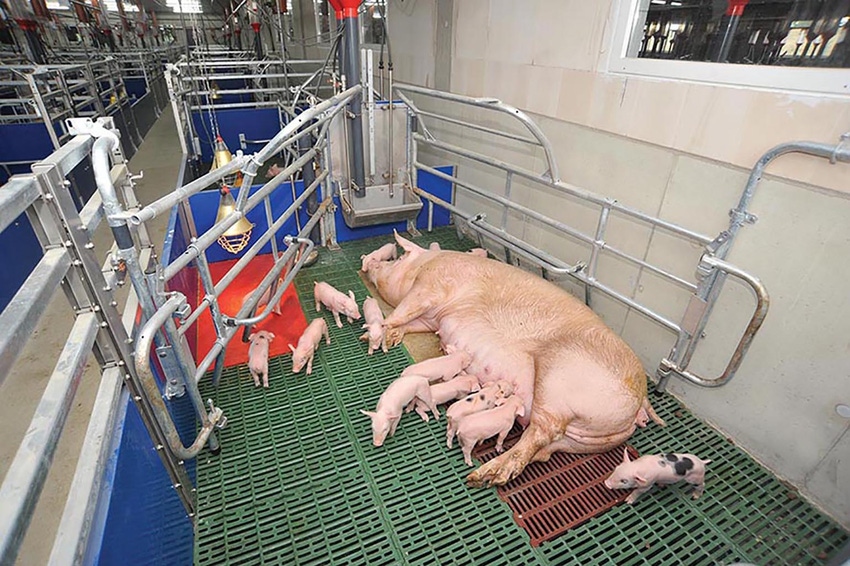An obligatory, economical component of the new pen concept is the piglet protection cage for short-time sow restraining.
July 1, 2019

German farming house supplier WEDA Dammann & Westerkamp has developed a new concept for freedom farrowing pens which can be adapted to individual customer requirements. The concept is based on long-term cooperation with customers from Finland. Similarly, to Finland, where freedom farrowing pens are eligible for state subsidies, pig farmers all across Europe are increasingly investing in the innovative pen type.
In Finnish pens, the floor must be at least 50% sealed and the mandatory minimum net area in Finland is six square meters. The mandatory nesting area, where the sow must not have access, must be one square meter. The farrowing pen gives the sow roughly four-and-a-half square meters of floor area with unrestricted use to turn around without obstruction.
Finnish sow farmers often incorporate low walls and lockable side frames in the pen to provide stability and good insight from all sides. Beyond that, the Finnish pen with integrated inspection corridors provides easy access to all areas without having to step into the pen.
“This way, trough inspections and cleaning work can be done quickly, hygienically and without complication and without disturbing the animals’ routine,” says one Finnish sow farmer who has tried out the new sow housing. “Not least thanks to this, my staff and I are protected much better from possible aggressive sow behavior. When we need to, we can enter the pen through a special entry gate without having to restrain the sow – for example to help with the birthing process or to rescue piglets from being crushed.”
An obligatory, economical component of the new pen concept is the piglet protection cage for short-time sow restraining.
The placement of the piglet protection cage impacts the sow’s resting position. Since sows prefer to lie down with their head facing fresh air, air is supplied at the trough front end. This means the sow’s head rests at the narrowest point of the triangular movement area. Therefore, rolling over too quickly from one side to the other is made more difficult for the sow. This gives the piglets enough time to move out of the sow’s way.
In the Finnish pens, the piglet protection cage is installed in a manner that provides farmers with a good overview of pen and sow. When the cage is open, the sow has a large range of movement; when it is closed, staff has enough room to move around the sow or to catch piglets.
The lockable piglet nest in the pen serves to temporarily restrain the piglets, for example in the case of necessary medical attention. It is located right at the corridor, close to the sow’s teats, to allow for newborn piglets to find them instantly.
“Our Finnish customers reported great experience with restraining the sow for five to seven days after the birth,” says Steffen Kaiser, who is responsible for the Scandinavian sales at WEDA. “This time window demonstrably involves the most piglet losses, and short time sow restraining significantly reduces those losses. This makes piglet losses in our freedom farrowing pens comparable to the losses incurred in conventional pens.”
Source: WEDA Dammann & Westerkamp, which is solely responsible for the information provided, and wholly owns the information. Informa Business Media and all its subsidiaries are not responsible for any of the content contained in this information asset.
You May Also Like



